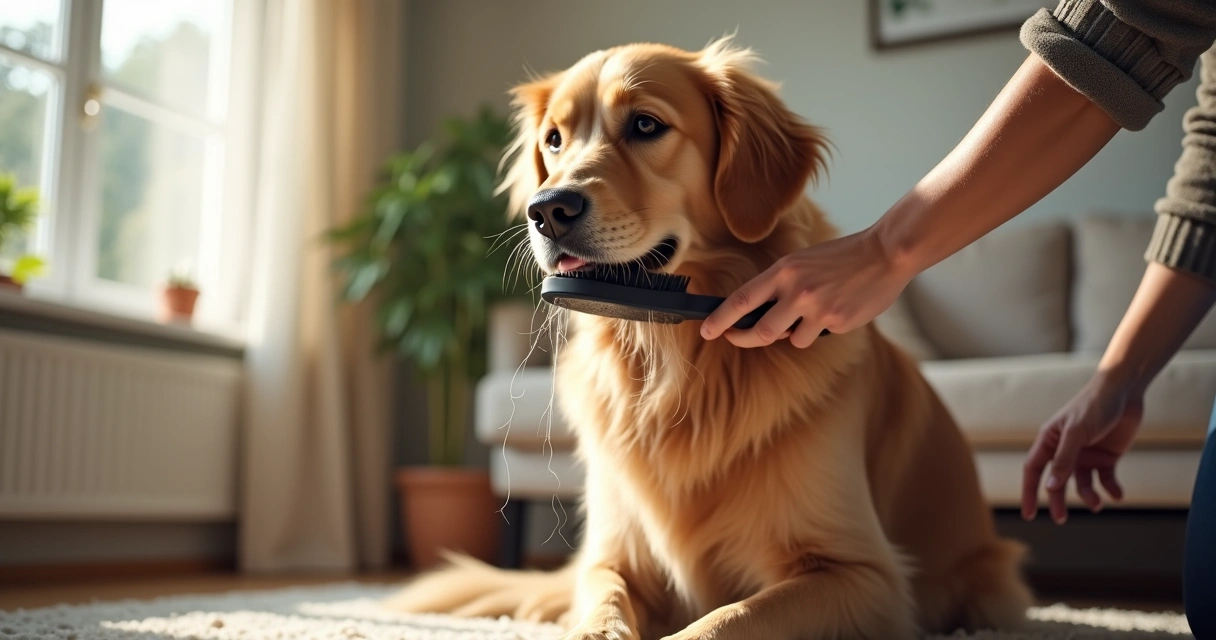When you welcome a dog or cat into your home, you sign up for a lot of joyful moments—plus a few responsibilities that aren’t always as fun. Nail trimming is a task that most pet owners put off, sometimes out of worry, sometimes because it just feels daunting. But those little nails grow faster than you think. And regular trimming does a lot more than keep your furniture safe from scratches.
Studies, including those reported by the National Center for Biotechnology Information, show that long, untrimmed nails can lead to changes in how your pet walks, discomfort, and even injury. But where do you even start choosing the right tool for your furry friend? Today, Dogtown will walk you through the choices, the features to consider, and even those little trade-offs that no one really talks about.
Why nail trimming matters
Keeping your pet’s nails at a healthy length is a small thing with big results. Overgrown nails don’t just snag on things—they can push against paw pads and joints. That can actually alter the way your pet moves, causing pain over time. The Texas A&M College of Veterinary Medicine & Biomedical Sciences suggests that trimming is needed every six to eight weeks, but you may need to adjust for your own animal. Surface, activity, age—all come into play.
If your pet visits grooming services at Dogtown or even enjoys our cat grooming, their nail health is part of the whole care plan. But what about when you do it at home? Getting the right tool matters as much as knowing how to trim.
Types of nail trimming tools
Nail trimming tools come in more flavors than you’d expect. They sound similar, but how they work—and how they feel in your hand—differs a lot. Let’s highlight the main types before diving any deeper:
- Scissor-style clippers
- Guillotine-style clippers
- Grinders (electric or manual)
- Files or emery boards
Each has its fans, but also its little quirks. Like so much in pet care, there isn't one “perfect” answer for everyone. Sometimes you don’t get it right at first—don’t worry. Most pet parents try a couple before finding one that feels just right.
Choose tools that fit not just your pet, but also your own hands.
Scissor-style clippers
This is the classic. Scissor clippers work especially well on larger dogs or cats with thick nails. They look much like garden shears, and the blades cut the nail straight across. If you have a medium to large dog, you’ll probably start with this style.
One tip from the Washington State University’s Veterinary Teaching Hospital: trim nails at a 45-degree angle (not straight down) to help avoid injury to the quick—basically the sensitive core of the nail.
Guillotine-style clippers
Guillotine clippers have a small ring for the nail to go through, and a single blade slides up to snip it off. Smaller dogs and cats, or those with more delicate nails, might do better with this type. Some find them easier to use but—just to be honest—they can dull fast, so choose for quality.
Grinders
With grinders, there’s no “snip”—it’s a smooth, rotating tip that gradually sands the nail down. These are popular for pets who hate the sound or feel of conventional clippers. For some anxious pets, grinders are less scary. Just bear in mind, the vibration and noise can be new sources of stress for others.

Files or emery boards
After you cut, you can smooth rough edges with a file. They’re not designed for trimming a lot off, but they work well for touch-ups, especially on tiny paws or to finish after using a grinder or clipper.
Features to look for
The science behind nail trimming tools is clear: fit and sharpness matter. As Purdue University College of Veterinary Medicine points out, the right clippers cut quickly and cleanly, reducing the risk of splitting the nail or causing pain.
- Size: Large clippers break under small nails. Small clippers struggle with big dogs. Choose accordingly.
- Sharpness: Dull blades crush the nail, often causing discomfort.
- Comfort: Ergonomic handles save your grip—especially if your dog or cat wriggles.
- Quietness: Grinders should be as quiet as possible. Nervous pets need low-vibration models.
- Safety guards: Many clippers have these to help prevent accidental cuts into the quick, but don’t rely on them alone.
- Quality of materials: Stainless steel blades resist rust and stay sharper longer.
- Easy cleaning: Clippers with removable blades or open construction make it simple to remove nail debris.
It’s sometimes tempting to grab the cheapest option at the store. I get it—budget is a real concern. But consider this: A well-made clipper or grinder lasts longer, does the job faster, and is less likely to turn trimming sessions into a wrestling match. That’s a trade-off that’s usually worth it in the long run.
Choosing based on your pet’s personality
All the fancy features in the world won’t work if your pet flips out at the sight of a clipper. The University of California, Davis highlights the benefit of slowly introducing tools and handling, especially for cats. Try letting your pet sniff and touch the tool before you attempt a trim.
For energetic dogs that spend their days running around our day camp, nails may wear down naturally and need less trimming. Indoor cats or less active pets may need more frequent attention. And if you visit overnight boarding or grooming at Dogtown, you can ask staff which tools they used and what worked well for your pet.
Patience makes nail trimming less of a battle. Tiny, regular “practice” trims can help.
Prepping for the trim: what you need
You don’t need a salon to get the basics right. Most pet owners should have the following on hand:
- Your selected clippers or grinder
- Styptic powder or pencil, in case of accidental nicks
- Good lighting—sunlight or a bright lamp is best
- Treats for positive reinforcement
The right environment keeps everyone calm. Find a cozy spot away from distractions and, if possible, have another person gently hold and reassure your pet, especially if you’re just starting out. At Dogtown, our trained staff uses kind, gentle restraint, but at home, a blanket or towel wrap can help, especially for cats.
Taking the fear out of nail trims
Start slow. If all you manage is getting the tool out and touching a paw before giving a treat, call it progress. Pet behaviorists suggest that introducing the sound (with grinders) or feel (with clippers) first, before any trimming, helps pets get used to the experience.
Trimming small amounts more often is safer than taking big chunks and risking contact with the quick. According to Texas A&M College of Veterinary Medicine & Biomedical Sciences, introducing trimming early in a pet’s life leads to better acceptance later on.

Conclusion: your pet, your confidence, your choice
Choosing the best nail trimming tool is less about brands, more about what feels safe for you and your companion. Ask questions the next time you visit Dogtown or browse our personalized training programs, where our staff can guide you through the basics. Sometimes, just a little bit of guidance makes all the difference. If you’re unsure or want to see proper techniques in action, schedule a visit, test out tools, or let us handle nail care as part of a pet spa session.
Gentle hands, the right tool, and a little patience—the real secrets to stress-free grooming.
Start your next trim with confidence. Or, if you’d like to see your pet cared for in a calm, expertly supervised environment, get in touch with Dogtown and book a grooming appointment or tour. Your pet’s joy starts with little steps—sometimes, with just a single, well-trimmed nail.
Frequently asked questions
What are the best nail trimming tools?
The best tools depend on your pet’s nail size, thickness, and temperament. Scissor-style clippers are reliable for bigger dogs, while guillotine clippers suit smaller pets. For those sensitive to sounds and quick movements, grinders are a gentle alternative. Files are handy for smoothing sharp points after clipping or grinding.
How to choose the right tool?
Consider your pet’s nail thickness, their reaction to noise or vibration, and your own comfort with the tool. A good fit will feel steady in your hand, cut swiftly, and suit the size of your pet. Testing a couple of types may help you find what works best, and talking with professionals during a Dogtown grooming session can provide guidance.
Is it worth it to buy electric trimmers?
Electric trimmers can offer smoother edges and less risk of accidental injury, especially if you go slow. They usually cost more up front and need recharging or batteries, but for pets who dislike regular clippers—or if you want more precision—they’re often a good investment.
Where to buy quality pet nail clippers?
Quality clippers are sold at pet supply shops, through groomers, or as part of grooming packages. At Dogtown, you can ask about recommended tools or let our staff take care of nail trims during a scheduled grooming session.
How often should I trim my pet’s nails?
Most dogs and cats need nail trims every 4 to 8 weeks. The frequency depends on activity level, surfaces walked on, and nail growth speed. If you hear nails clicking on the floor, it’s time for a trim. Don’t forget that regular maintenance supports comfort and prevents injury, as supported by studies from Texas A&M College of Veterinary Medicine & Biomedical Sciences.





